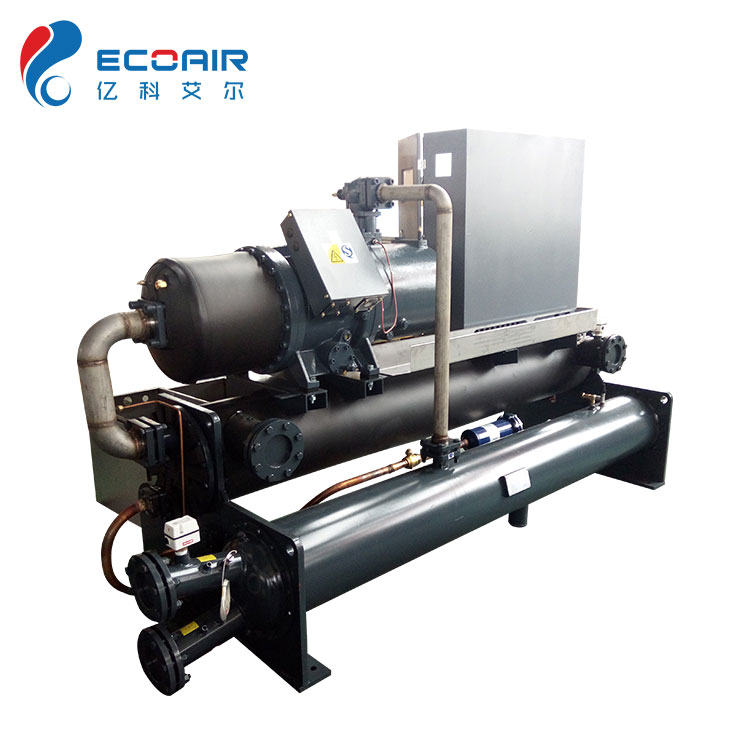Key Components of Water Cooled Chiller
2024-07-04
Water-cooled chillers are essential components in HVAC (Heating, Ventilation, and Air Conditioning) systems, industrial processes, and various cooling applications. They consist of several key components that work together to remove heat from a liquid (typically water) and dissipate it into the environment. Here are the key components of a water-cooled chiller:
1. Compressor:
- The compressor is the heart of the chiller system.
- It compresses the refrigerant gas, raising its temperature and pressure.
- Common types include centrifugal, scroll, reciprocating, and screw compressors.
2. Condenser:
- The condenser receives high-pressure, high-temperature refrigerant vapor from the compressor.
- It transfers heat from the refrigerant to a cooling medium, usually water.
- In water-cooled chillers, this heat exchange occurs in the condenser tubes where water flows.
3. Evaporator:
- The evaporator absorbs heat from the chilled water (or other fluid) circulating through it.
- As the refrigerant expands and evaporates, it cools the circulating water or fluid.
- This chilled water is then circulated to the cooling coils or processes needing cooling.
4. Expansion Valve:
- The expansion valve regulates the flow of refrigerant into the evaporator.
- It controls the pressure and temperature of the refrigerant entering the evaporator, ensuring optimal efficiency.
5. Cooling Water Circuit:
- This includes the water circuit that carries the heat away from the chiller system.
- Typically, there are separate circuits for the process water (or chilled water) and the cooling water.
- The cooling water absorbs the heat from the condenser and is then discharged or recycled.
6. Controls and Sensors:
- Modern chillers are equipped with controls and sensors to monitor and regulate various parameters such as temperature, pressure, flow rate, and operating conditions.
- These controls optimize the chiller's performance, energy efficiency, and reliability.
7. Pumps:
- Pumps circulate the water or coolant through the chiller system.
- There are typically separate pumps for the chilled water loop and the cooling water loop.
- These pumps ensure proper flow rates and pressures throughout the system.
8. Shell and Tube Heat Exchanger (Optional):
- Some water-cooled chillers may include a shell and tube heat exchanger to enhance heat transfer between the refrigerant and the cooling water.
- This component helps improve the overall efficiency of the chiller system.
9. Insulation and Housing:
- The chiller unit is enclosed in a housing that protects the components and helps minimize heat loss.
- Insulation is often applied to the piping and components to reduce energy consumption and prevent condensation.
Each of these components plays a crucial role in the operation and efficiency of a water-cooled chiller system. They work together to remove heat from the chilled water or process fluid, maintain consistent cooling temperatures, and ensure reliable operation in various industrial and commercial applications.



